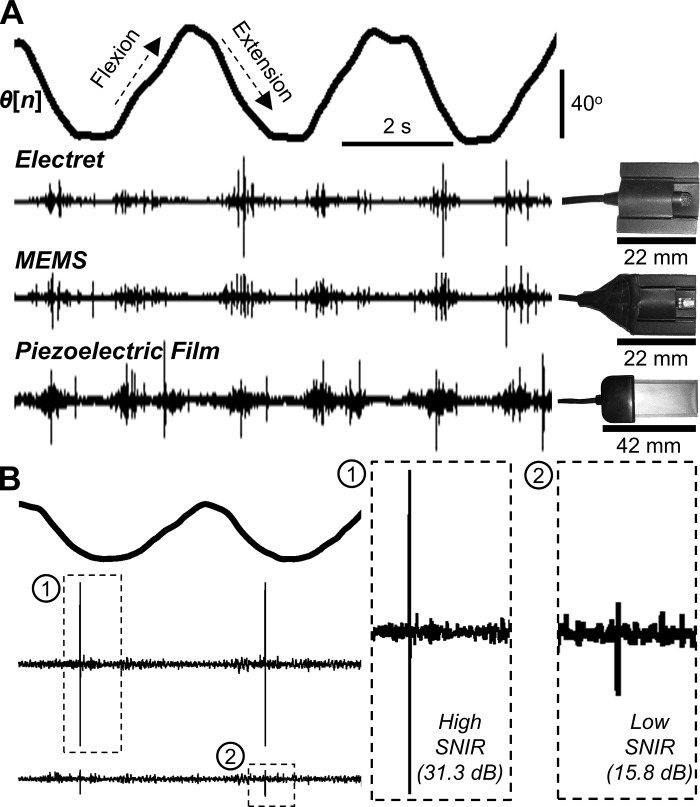Fig. 2.
A comparison of different microphones investigated for wearable joint sound sensing. A: electret, MEMS, and piezoelectric film microphones simultaneously captured joint sounds during three repetitions of flexion/extension exercises as indicated by joint angle (θ[n]). The traces show that prominent acoustic emissions are captured by all three types of microphones. The electret and MEMS microphones show high degrees of similarities because both sensors capture airborne sounds. The piezoelectric film shows the highest similarity to the air microphones when capturing high-frequency sounds (clicks). The relative sizes of the microphones are shown on the right. B: an illustration of differences in signal-to-noise-and-interference ratio (SNIR) with two representative recordings. Two electret microphones were placed laterally and medially during two cycles of flexion/extension. The lateral microphone “1”—for this particular subject—exhibits high SNIR (31.3 dB) since the click is highly distinguishable from the baseline noise, whereas the medial microphone “2” shows a lower SNIR (15.8 dB) because the click’s amplitude is closer to that of the noise. [From Teague et al. (56).]

